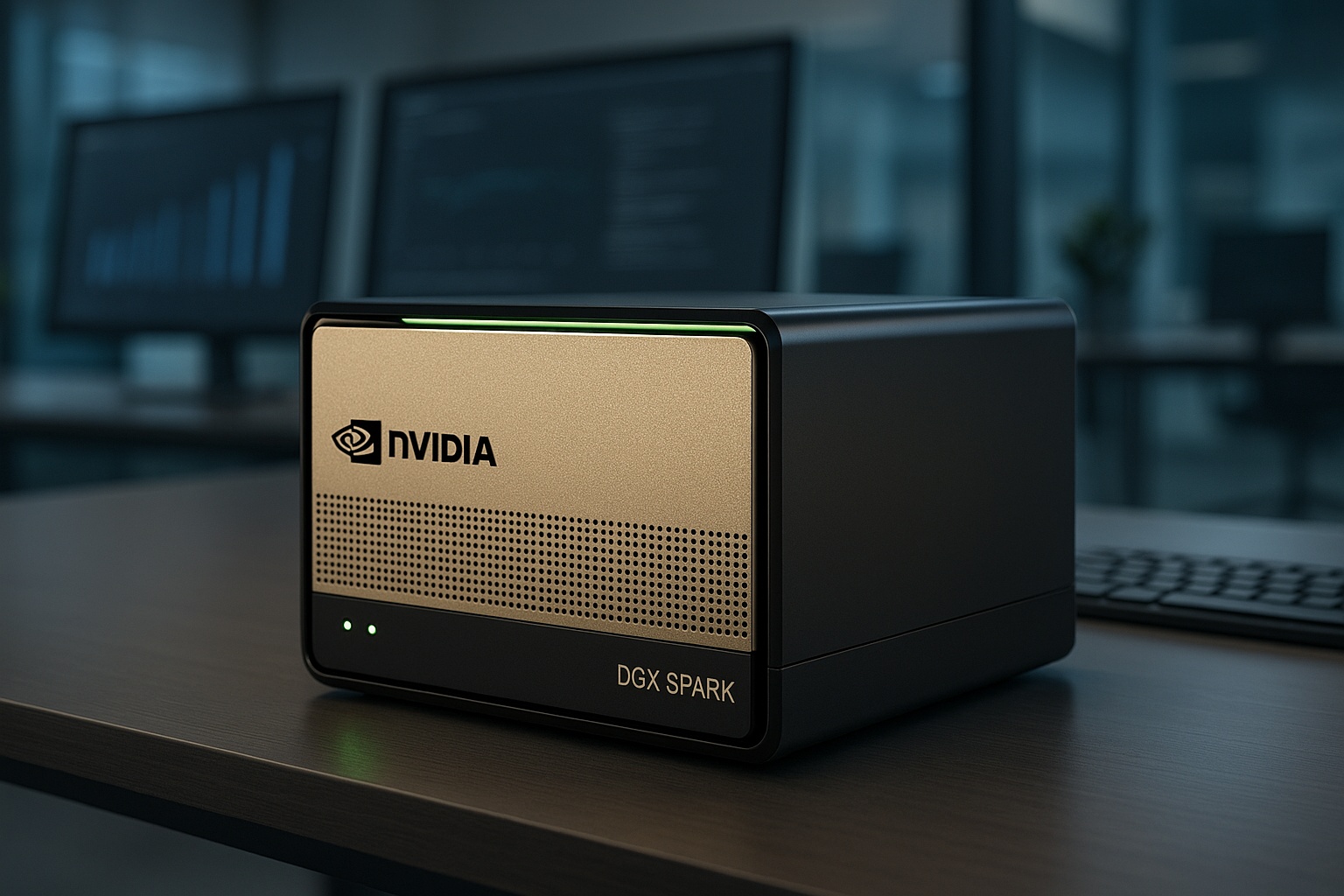Nvidia DGX Spark: The $3,999 "Personal AI Supercomputer" and Its Enterprise Implications

In an era where artificial intelligence is rapidly reshaping industries, the demand for accessible yet powerful AI infrastructure has never been higher. Nvidia's recent launch of the DGX Spark, dubbed a "personal AI supercomputer" with a price tag of $3,999, presents a compelling proposition. This device, designed to bring AI supercomputing capabilities to the desktop, raises a critical question for enterprise decision-makers: Is this a disruptive force that democratizes advanced AI development, or a niche tool with limited business impact?
In an era where artificial intelligence is rapidly reshaping industries, the demand for accessible yet powerful AI infrastructure has never been higher. Nvidia's recent launch of the DGX Spark, dubbed a "personal AI supercomputer" with a price tag of $3,999, presents a compelling proposition. This device, designed to bring AI supercomputing capabilities to the desktop, raises a critical question for enterprise decision-makers: Is this a disruptive force that democratizes advanced AI development, or a niche tool with limited business impact?
Bridging the Gap: Desktop AI Supercomputing for the Enterprise
The NVIDIA DGX Spark, also referred to as Project DIGITS in earlier announcements, is a compact powerhouse. It integrates Nvidia's cutting-edge GB10 Grace Blackwell Superchip, boasts 128GB of unified memory, and offers up to 4TB of NVMe SSD storage. While its desktop form factor might suggest a consumer-oriented device, its true potential lies in empowering AI developers, researchers, and data scientists within enterprise environments.
Traditional enterprise AI infrastructure often involves significant capital expenditure, complex data center deployments, and reliance on cloud-based services, which can incur substantial operational costs. The DGX Spark offers an intriguing alternative, potentially accelerating various stages of the AI development lifecycle. By providing localized, high-performance computing, it could facilitate faster prototyping, more agile model development, and efficient deployment of edge AI solutions.

Strategic Use Cases and the ROI Equation
For enterprises, the value of the DGX Spark extends beyond its technical specifications to its potential for tangible return on investment (ROI). Consider the following strategic use cases:
- Accelerated AI Model Training: While not intended for training massive foundational models, the DGX Spark can significantly speed up the development and iteration of smaller, specialized AI models or initial training phases, reducing reliance on shared, often congested, data center resources.
- Local Data Analysis and Security: For organizations handling sensitive data, local processing capabilities offered by the DGX Spark can enhance data security and compliance by minimizing data transfer to external cloud environments. This is particularly relevant for industries like finance, healthcare, and government.
- Edge AI Development and Testing: The device provides an ideal platform for developing, testing, and optimizing AI models destined for edge deployments, such as in manufacturing, retail, or smart city initiatives. This localized development can streamline the path from concept to deployment.
- Scientific Simulations and Financial Modeling: Beyond general AI, its computational prowess makes it suitable for complex scientific simulations, advanced financial modeling, and risk analysis, offering dedicated resources for critical analytical tasks.
From an ROI perspective, the $3,999 price point, while substantial for a personal device, is negligible when compared to the multi-million dollar investments often required for enterprise-grade AI infrastructure. The value proposition is clear:
- Acceleration: Faster iteration cycles for AI development translate directly into reduced time-to-market for AI-driven products and services.
- Accessibility: It democratizes advanced AI capabilities, making high-performance computing accessible to individual developers and teams without the overhead of provisioning large-scale resources.
- Security & Efficiency: Local processing for sensitive data and the ability to offload smaller AI workloads from expensive cloud resources can lead to significant cost savings and improved data governance.
Navigating the New Landscape: Successes and Challenges
The introduction of personal AI supercomputers like the DGX Spark will undoubtedly create new opportunities and challenges for enterprises. Potential success stories will emerge from organizations that strategically integrate these devices into their broader AI strategy, leveraging them for rapid prototyping, specialized AI model development, and secure on-premise experimentation.
However, challenges remain. Integrating these individual units into existing enterprise AI/MLOps pipelines will require careful planning to ensure seamless workflow and version control. Scalability limitations mean that while excellent for development, the DGX Spark is not a replacement for data center-scale infrastructure required for training truly massive models or handling large-scale production deployments. Furthermore, managing and governing a distributed fleet of personal AI supercomputers will introduce new IT and security considerations.

Conclusion: A Catalyst for Enterprise AI Innovation
Nvidia's DGX Spark is more than just a powerful desktop computer; it represents a significant step towards democratizing AI supercomputing. For enterprise businesses and decision-makers, it offers a compelling tool to accelerate AI adoption, foster innovation, and potentially unlock new efficiencies. The key to success will lie in a strategic approach: identifying clear use cases, understanding its role within a hybrid AI infrastructure, and focusing on the measurable outcomes it can deliver.
We encourage enterprise leaders to explore the potential of such devices. Consider pilot programs to evaluate their impact on developer productivity, project timelines, and overall AI strategy. The future of enterprise AI may well be a hybrid one, where the power of the data center is augmented by the agility and accessibility of personal AI supercomputers.
References
- Industry research and analysis from leading AI technology providers and research institutions.
- Enterprise AI implementation case studies and ROI analysis from Fortune 500 companies.
- Market research reports from Gartner, McKinsey, and other leading consulting firms on AI adoption trends.
- Technical documentation and whitepapers from AI platform vendors and service providers.
- Regulatory compliance frameworks and guidelines for AI implementation in enterprise environments.
Ready to Implement AI in Your Enterprise?
Our team of AI experts can help you navigate the complex landscape of AI infrastructure and implementation. Book a free consultation to discuss your specific needs.
Book Free Consultation